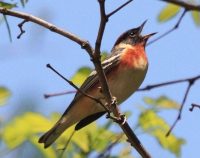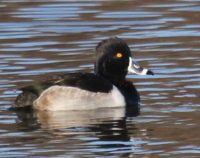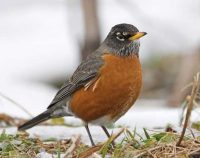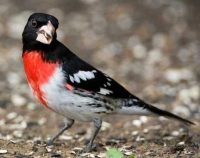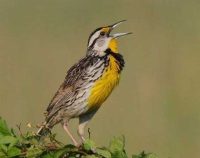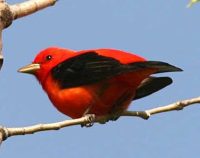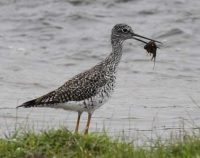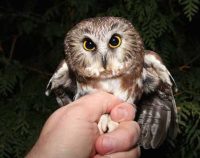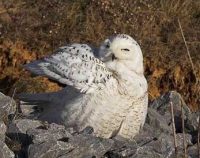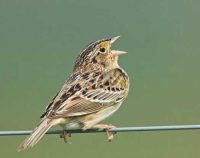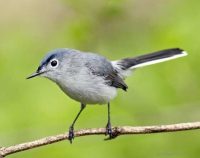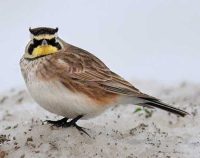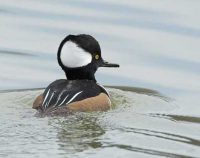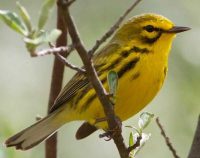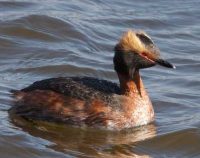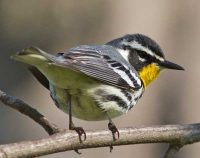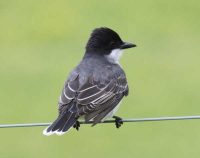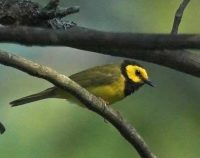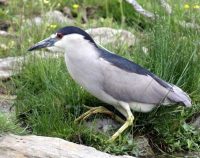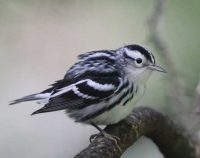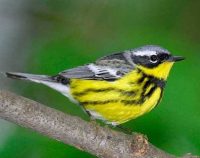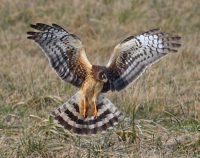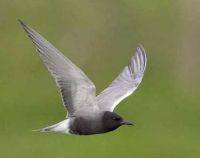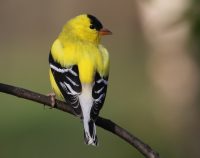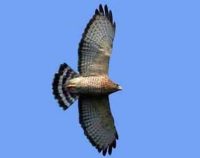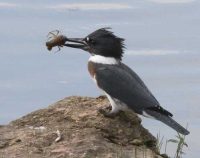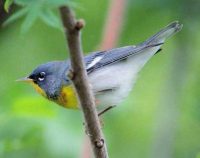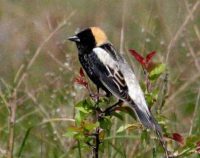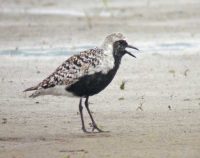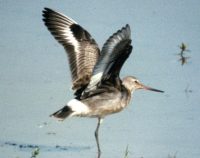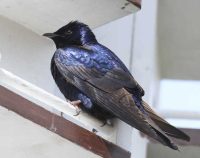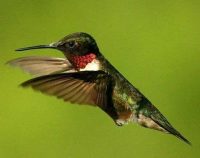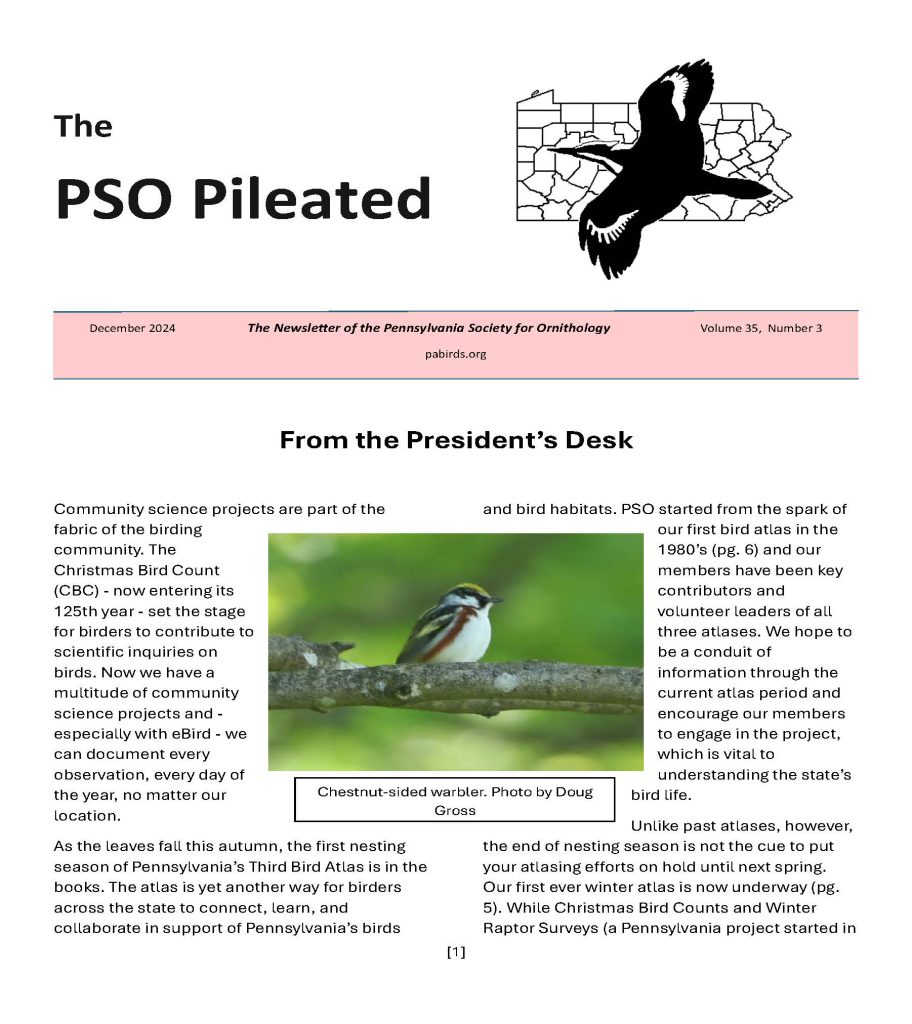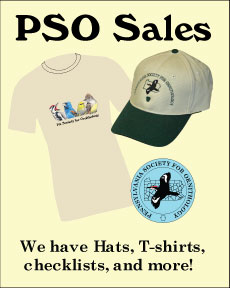PABIRDS Listserve
Introduction
The PABIRDS list functions as a large e-mail distribution list, linking the birding community in Pennsylvania together, electronically.
This list is hosted by the National Audubon Society and serves as a forum for birders to discuss all aspects of birdlife in Pennsylvania, including rare birds, bird findings, bird identification, bird behavior, backyard birding, trip reports, bird counts, and bird club information.
The LISTSERV@LIST.AUDUBON.ORG email address does not go to a person but, instead, goes to the LISTSERV program on a National Audubon Society computer.
The main limitations are the topics for discussion must be about wild birds and geographically limited to Pennsylvania. On occasion and with permission of the list owner, birders can post notes and sightings from neighboring states. Please ask the listowner about posting such listings.
This list is open to people of all skill levels, from professional ornithologists to beginning backyard birders.
New subscribers receive posts immediately. Although not mandatory, it is recommended that new subscribers wait a few days before sending a post. This gives the new subscriber time to get a “feel” for the list (the topics and the people).
The following guidelines are presented to make the list fair and to clarify permissible behavior on the list. It is expected that people will follow these guidelines when posting and interacting with others on the list.
Deb Grove Listserve Administrator
Rules of the List
Things to Avoid Discussing
Posting Rules
Rules for Reporting Birds
Administrative Commands
How to Subscribe to the list
How to send a Message to the List
How to leave the list (Unsubscribe)
How to Suspend Receiving Messages from the Listserv
How to Resume Receiving Messages from the Listserv
How to receive a digest of the day’s messages
How to get a list of LISTSERV COMMANDS
Unexpected Removal
Archives
Other Audubon Lists
Conclusion and Contact Info
Rules of the List
Back to top
Things to Avoid Discussing or Posting on PABIRDS
Cats – unless you have something about keeping your cat(s) indoors or have info on the ABA CATS INDOORS Program. We want to avoid discussing animal rights issues.
Politics – unless the “Politics” relates to birds, birding or habitat. Action alerts related to birds in PA are not politics as defined by the listowner. Action alerts related to PA birds by Audubon PA staff and board will be posted on occasion. These will likely be rare. If you have a question about them, ask the poster privately or send them to the listowner, the should not have to be discussed on the list. If anyone else wants to post an action alert or anything questionable, ASK THE LISTOWNER FIRST. Anything else that clearly does not have to do with a forum for birders to discuss all aspects of birdlife in Pennsylvania, including rare birds, bird findings, bird identification, bird behavior, backyard birding, trip reports, bird counts, and bird club information. ASK THE LISTOWNER FOR PERMISSION TO POST.
Bottom line is, if what you want to post does not fit into any of the criteria mentioned above, ASK THE LISTOWNER FIRST!
General Conservation Issues – unless related to birds in PA or birding in PA. If you want to discuss general conservation issues and politics as related to conservation go to: http://www.audubon.org/net/list/audubon-pa/.
Anyone who posts “junk mail” (advertising, chain letters, and the like) to the list will be removed without warning.
It is the policy of the National Audubon Society not to permit any type of commercial advertising on this list.
Do not post virus alerts, chain letters, or discuss the ethics and/or morality of hunting or falconry.
Do not post exact locations of, and/or directions to, endangered species (especially nests) or any owls or raptors.
Posting of copyrighted material for which the poster does not own the copyright (e.g. newspaper or magazine articles) is not allowed. If you think subscribers might be interested in reading such material, please send a brief message to the list, indicating the topic and including the URL (web address) for the material.
Attachments can be hard or even impossible to download. Also, attachments can carry computer viruses. If you have an attachment in which you believe others would be interested, send a note to the list and have people contact you directly. You can then send your attachment on an individual basis.
If unsure about posting something to the list, contact the listowner.
Posting Rules
Back to Top
This is an open list for subscriptions, that is, anyone can join, but only subscribers can post messages to the list.
When replying to a message, only quote the minimum amount of the message being replied to. For example, if you have a minor point about one word in a 100-line message, don’t quote the entire 100-line message in your reply before adding your 1-line point, just quote the minimum necessary to provide context.
Please keep extraneous comments, corrections to other people’s spelling or grammar errors, me-too remarks, minor corrections to a post, and anything else that can best be handled in private email to the original sender off the list. With over 600 people on this list, we need to keep focused on birds!
Put the county from which you saw the bird, made the sighting, etc. into the subject line. For example, Bald Eagle – Centre County or Golden Eagle Spotted – Luzerne County. This helps people weed out posts so that only those interested will respond or read your post.
Please put your full name, e-mail address, and location (at the very least the county and the town in the body of the message you send to the list, so people will know who you are and where you’re coming from. Town and county or any landmarks, route numbers and/or other geographic info where you saw a bird or did your birding are also useful.
Most mailing programs allow you to create a “signature” file, which is appended to all outgoing messages, so you won’t have to retype your name, town and county every time you post.
Always employ the highest possible standards of grammatical, rhetorical, and literary excellence. Think before you write!
To be recognized as a valid subscriber by the list software, you must send all your postings and administrative commands from the email address from which you subscribed.
When you send a message, you want it to be read by the widest audience possible. Use plain text only. Anything else may be unreadable to many subscribers and can wreak havoc with some subscribers’ e-mail software. Do not send HTML, UUENCODE, specially formatted documents such as Word, WordPerfect, or RTF. If possible, turn off HTML formatting in your mailer preferences.
Message length is set at 250 lines/post. Anything longer will be rejected.
Posts that offer intelligent, reasoned debate in a civil tone or argue a different point of view, but are respectful of the poster and list as a whole, are welcomed. Posts that belittle, nitpick, attack, or insult another poster and his/her ideas are unacceptable.
Subscribers’ expertise with PABIRDS and the Internet varies widely. Show tolerance of posts by new subscribers and posts that are occasionally off-topic, poorly written, or not up to your personal standards.
Be slow to take offense to posts. You may have misjudged the poster’s meaning. Remember, tone of voice, facial expressions, and body language–especially to convey humor–are absent in this forum. It is permissible to attack the message, BUT NOT the messenger!
If a request for info is sent to the list, have people respond directly to the originating sender not to the whole list.
The mention of a subscriber’s business or employer, and/or web page in a signature is permitted.
If something upsets you on the list, be sure to make generous use of the delete key!
Rules for Reporting Birds
Back to Top
Heard vs. Seen
There is sometimes a concern over whether a bird is heard or seen. The important thing is that the bird is IDENTIFIED. Some species look distinctive and sound distinctive, such as a Great Horned Owl. Hearing or seeing it usually results in a positive ID. Some birds have very similar songs, calls, flight notes or chips, so seeing them is very important in identifying them. An example of this is Chipping Sparrow and Pine Warbler. On the other hand, some birds look very similar and are difficult to ID unless heard: some of the empidonax flycatchers would be good examples. Both methods (seeing and hearing) used in conjunction helps to provide the most positive identification. Most birders derive much more satisfaction out of seeing a bird, but do not necessarily achieve a more accurate identification.
Canada vs. Canadian
Canada Goose is the name of the species that all of us know and love so well. To call this bird a CANADIAN Goose implies something totally different. It says that the goose is from Canada, which many/most of our Canada Geese are not; they were hatched right here in PA. So a Snow Goose or a Brant could be and probably is of Canadian origin, but a Canada Goose can be from anywhere. Very few people would think to call a Canada Warbler a Canadian Warbler, regardless of where it hatched.
Wigeon
The old spelling of Wigeon is Widgeon. The ‘d’ was dropped several decades ago. An even older name for the species was Baldpate, which meant ‘white head’.
People from all over PA, the US, the continent, and even the world read PABirds. For this reason an Eastern Phoebe in your backyard has much more meaning than a phoebe. Broad-winged Hawk is much more explanatory than ‘BW”. Common Yellow Throated Wabler could be a Common Yellowthroat, a Yellow-throated Warbler, or possibly something totally different. It is important to write names correctly and in full and it really takes very little more time. It also gets you into your field guide more often, which continues the learning process. The whole idea of the listserv is to communicate, so proper bird names are a key element in accomplishing this task.
Remember you can sight a bird (see it with your eyes), but the bird lives on a site.
ADMINISTRATIVE COMMANDS
Back to top
You have control over certain aspects of how you get mail from the list. This control is exercised via the submission of administrative commands directly to the “mailing list server”, the machine/program that implements mailing lists at Audubon. The mailing list server is known as “listserv”, and any administrative request must be sent to the server at this address:
listserv@list.audubon.org
Please note that mail sent to this address is processed by a machine, not a person. Here are some useful administrative commands:
How to Subscribe to the list
Back to top
To subscribe to the list, send this command message:
SUBSCRIBE PABIRDS YOURFIRSTNAME YOURLASTNAME
to:
LISTSERV@LIST.AUDUBON.ORG
Example: SUBSCRIBE PABIRDS John Smith
VERY IMPORTANT!! After typing the above, hit the ENTER key two times to be sure your email software sees your subscribe command.
A confirmation will be sent to you, just follow the instructions.
How to send a Message to the List
Back to top
To send a message to all subscribers to read, send your message to:
PABIRDS@LIST.AUDUBON.ORG
(Capitalization does not matter.)
A message sent to the above address is then sent to all subscribers of the
list, so be careful what you send.
How to leave the list
Back to top
To stop receiving list messages, send this command message:
UNSUBSCRIBE PABIRDS
to:
LISTSERV@LIST.AUDUBON.ORG
NOTE: This is a different address than regular posts.
VERY IMPORTANT!! After typing the above, hit the ENTER key two times to be sure your email software sees your subscribe command.
How to Suspend Receiving Messages from the Listserv
Back to top
If you will be away from your email for a period of time, you may not want
messages from the discussion list to pile up in your email box.
This will suspend delivery without dropping your list subscription. (This is great
if you are going on vacation!!)
Send the following command:
SET PABIRDS NOMAIL
to
LISTSERV@LIST.AUDUBON.ORG
VERY IMPORTANT!! After typing the above, hit the ENTER key two times to be sure your email software sees your subscribe command.
How to Resume Receiving Messages from the Listserv
Back to Top
When you want to resume delivery of messages,
send this command message
SET PABIRDS MAIL
to
LISTSERV@LIST.AUDUBON.ORG:
How to receive a digest of the day’s messages
Back to top
PABIRDS generates plenty of messages. The Digest Option allows you to receive PABIRDS messages in digest format, that is all at once, one time a day.
An advantage is that you can receive a compilation of messages as one message and are not interrupted during the day with a stream of messages. The disadvantage of course is that you miss out on “real-time” conversation. Choosing the Digest Option for PABIRDS is easy to do:
In the TO field of your e-mail, type the following: listserv@list.audubon.org.
Leave the SUBJECT line blank or if your mailing program does not permit this, you can type in anything, the software just ignores it.
In the body of the message type the following:
set PABIRDS digest
and send it.
TO GET A LIST OF LISTSERV COMMANDS
Back to top
You can send a command message to
LISTSERV@LIST.AUDUBON.ORG
with only the following text as your email message:
INFO REFCARD
(As with other messages to this address, the topic or subject of the
message does not matter).
If you want to find out more about how LISTSERV mailing lists work, you may
want to visit this web page: http://www.lsoft.com/manuals/userindex.html
Unexpected removal from the list
Back to top
If you receive a message indicating that you have been removed from the list, although you did not send an UNSUBSCRIBE request, please contact the list owner directly: PABIRDS-request@list.audubon.org
ARCHIVES
Back to top
You can access this list at http://list.audubon.org/archives/pabirds.html
Archives are available from this page as well and everything posted to PABIRDS are permanently archived at the above url on a powerful ornithological search engine, dedicated solely to birds and birding in PA.
OTHER AUDUBON LISTS
Back to top
This is one of several LISTSERV email discussion lists hosted by the
National Audubon Society. You can find out about other Audubon discussion
lists by visiting this web page: http://www.audubon.org/net/list/
CONCLUSION and CONTACT INFO
Back to top
Through sharing information, we can all learn more about birds and birding. We hope that you will find membership and the discussions in PABIRDS to be satisfying, interesting and productive!
This discussion list is not moderated and no prior review of postings takes place. Deb Grove is the Administrator, helping to make sure that the list is working as intended. Feel free to contact her through email at: dsg4@PSU.EDU with any questions or concerns.
If you are interested in the work of Audubon in PA, you can join the Audubon-PA list.
To find out more about this companion list of PABIRDS, send email to: LISTSERV@LIST.AUDUBON.ORG with this command:
INFO AUDUBON-PA
or go to < http://list.audubon.org/archives/audubon-pa.html >.
Through sharing information, we can all learn more about birds and birding. We hope that you will find membership and the discussions in PABIRDS to be satisfying, interesting and productive!
Thank you for your interest in PABIRDS.
Audubon Pennsylvania
100 Wildwood Way
Harrisburg, PA 17110
Phone:717-213-6880
FAX:717-213-6883
Be sure to visit Audubon in Pennsylvania on the WWW at: http://pa.audubon.org

